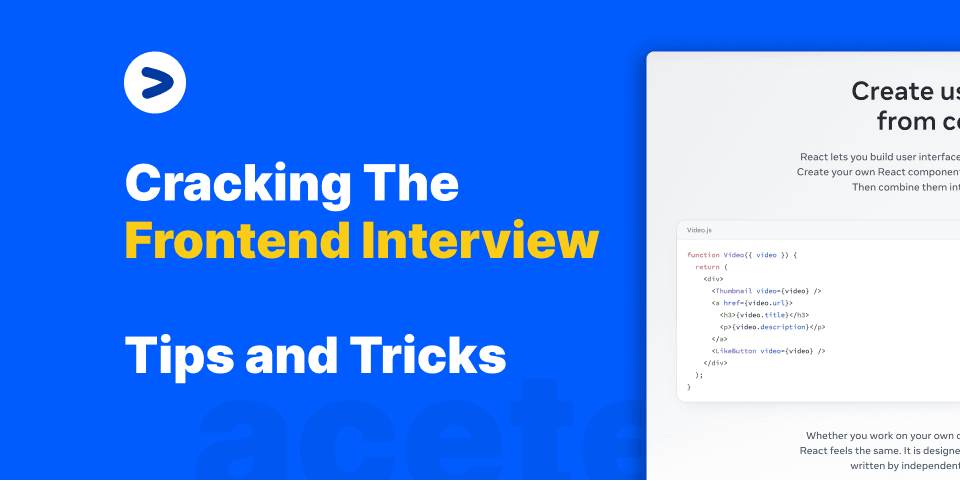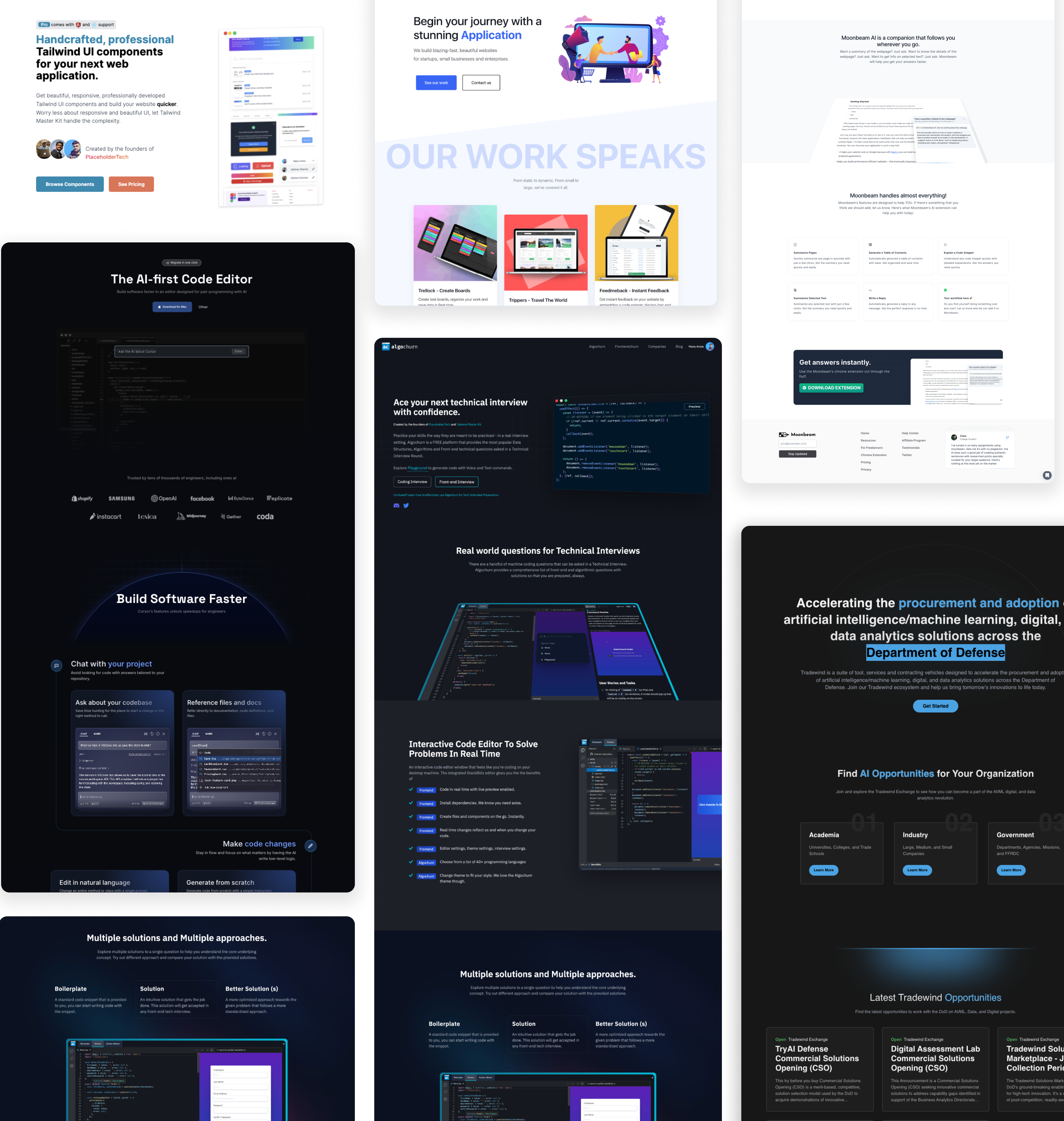
Cracking the Frontend Development Interview: Tips and Tricks
Are you a job seeker who is looking for tips on how to ace your next front-end development interview? Look no further! In this blog post, we will cover some essential tips and tricks that will help you stand out in your next interview.
Introduction
Preparing for a front-end development interview can be a daunting task. However, it is crucial to remember that the time and effort you put into preparing for the interview will pay off in the end. A successful interview could lead you to your dream job. In this blog post, we will cover researching the company, preparing for technical questions, building your portfolio, and tips for the interview day.
Researching the Company

Before going into an interview, it is essential to understand the company's mission and values. By understanding what the company stands for, you can better tailor your responses to their values. It is also important to examine the company's products and services. This research will help you understand what kind of work you would be doing if hired. By showing an interest in the company's products and services, you can show that you are invested in the company's success. Lastly, researching the company's culture and work environment can help you determine if the company is a good fit for you. By understanding the company's culture, you can determine if it aligns with your work style.
Preparing for Technical Questions

Technical questions are an essential part of any front-end development interview. It is essential to review essential frontend development concepts such as HTML, CSS, JavaScript, and responsive design. By reviewing these concepts, you can demonstrate your knowledge to the interviewer. Practicing coding challenges and technical questions is also an effective way to prepare for an interview. Websites like LeetCode and HackerRank offer coding challenges that simulate real-world problems. By practicing these challenges, you can improve your problem-solving skills and become more comfortable with technical questions. Whiteboard exercises are also common in front-end development interviews. It is essential to practice whiteboard exercises to become comfortable with writing code in front of an interviewer.
Building Your Portfolio

Your portfolio is a crucial element of any front-end development interview. It is essential to highlight your relevant front-end development experiences in your portfolio. This can include projects you have worked on, websites you have built, and any relevant work experience. Showcasing your coding projects and side projects is also important. Employers want to see that you are invested in front-end development outside of work. By showcasing your side projects, you can demonstrate your passion for front-end development. Lastly, sharing your contributions to the front-end development community is another way to stand out. This can include contributing to open-source projects or writing blog posts about front-end development.
Top 5 Javascript Interview Questions

1. What is the Document Object Model (DOM)?
The DOM is a programming interface for HTML and XML documents. It represents a document's structure and allows web developers to manipulate the content, structure, and styles of a webpage using JavaScript.
2. What are the differences between Flexbox and CSS Grid?
Flexbox and CSS Grid are two layout modules in CSS. Flexbox focuses on one-dimensional layouts (either rows or columns), while CSS Grid is designed for two-dimensional layouts (rows and columns). Both offer powerful and efficient methods for creating responsive designs.
3. What are the key principles of responsive design?
Responsive design aims to create a consistent user experience across various devices and screen sizes. The key principles include fluid grids, flexible images and media, and media queries that adjust the layout and design based on the device's screen size and resolution.
4. Can you explain the concept of event delegation in JavaScript?
Event delegation is a technique in which an event listener is added to a parent element instead of individual child elements. This allows for better performance and easier code maintenance, as the event listener captures and handles events that bubble up from its child elements.
5. What is the difference between '==' and '===' in JavaScript?
In JavaScript, '==' is a loose equality operator that compares two values for equality, performing type coercion if necessary. On the other hand, '===' is a strict equality operator that compares both the value and the type of the operands, ensuring they are identical without performing type coercion.
Top 5 React Interview Questions

1. What is state management in React?
State management refers to the process of handling the data and state of a React application. It involves organizing and maintaining the application's data in a centralized and structured way, allowing components to communicate and share data efficiently. This can be achieved through the use of libraries like Redux, MobX, or React's built-in Context API.
2. What is the Context API and how does it work?
The Context API is a feature in React that allows you to share data through the component tree without having to pass props down manually at every level. It provides a way to pass data to components without using prop drilling. You can create a context object, wrap your components inside a Provider component, and then use the useContext Hook or the Consumer component to access the context data in any child component.
3. What are Components and Lifecycle Methods in React?
Components are the building blocks of a React application. They are reusable pieces of UI that can contain state, logic, and markup. In React, components can be either class-based or functional.
Lifecycle methods are special methods in class-based components that get called at different stages of a component's life. They allow you to perform actions like fetching data, updating the DOM, or cleaning up resources when a component mounts, updates, or unmounts. Some common lifecycle methods are componentDidMount, componentDidUpdate, and componentWillUnmount.
4. What is the Virtual DOM and how does it work?
The Virtual DOM is a lightweight in-memory representation of the actual DOM. It is an optimization feature in React that helps to improve the performance of rendering. When the state of a component changes, React creates a new Virtual DOM tree and compares it with the previous one (a process called "diffing"). React then updates only the parts of the actual DOM that have changed, minimizing the number of DOM manipulations and improving performance.
5. What is memoization in React and how does it help?
Memoization is a technique used in React to optimize the rendering of components by caching the results of expensive function calls and reusing them if the inputs do not change. This helps to prevent unnecessary re-renders and improve performance, especially in cases where a component receives complex data or frequent updates.
In React, you can use the React.memo() Higher-Order Component (HOC) to memoize functional components, and useMemo() or useCallback() hooks to memoize values or callback functions inside functional components.
Tips for the Interview Day
Preparing for the interview day is just as important as preparing for the technical questions. Dressing appropriately and arriving on time are essential elements of any interview. You want to make a good first impression on the interviewer. Preparing questions for the interviewer is also an effective way to show interest in the company. By asking thoughtful questions, you can demonstrate your knowledge of the company and its products and services. Demonstrating positive body language and communication skills is also important during the interview. Maintaining eye contact and speaking clearly and confidently can help you stand out from other candidates.
Conclusion
In conclusion, preparing for a front-end development interview requires time and effort. However, by researching the company, preparing for technical questions, building your portfolio, and following these tips for the interview day, you can ace your next front-end development interview. Good luck! 🌟 This article is written by gomoonbeam.com – I literally spent 10 minutes editing this and it's top-notch. Visit moonbeam for awesome content generation tools.
posted by Manu Arora










